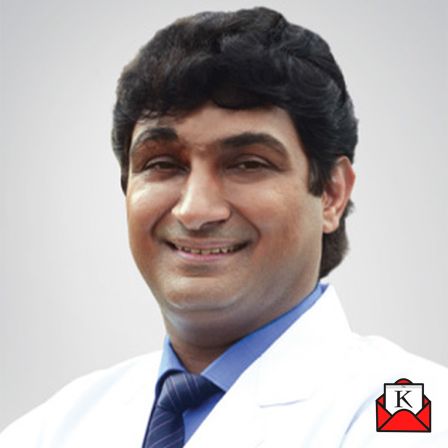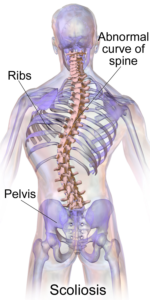Guest Blog: Prompt Diagnosis And Treatment Can Improve The Cosmetic Appeal In Scoliosis Patients


Attributing to manifold reasons, India is home to a substantial number of cases of spinal deformities. The major causes include consanguinity, accidents, social violence, nutrition deficiency, tuberculosis, post-polio complications, and congenital problems. Of all the deformities, scoliosis (s-shaped side to side bending of the spine) is the most common and readily treatable form. Though scoliosis often occurs in a mild form, society stigmatizes such patients. Timely detection and treatment can help in treating this condition, therefore creating awareness among the masses is very important.
Advanced technological modalities like neuro-monitoring, neuro-navigation, and ultrasonic scalpels, have not only made the procedure accurate and precise but also ensures minimal collateral damage and sustains functional value.
What is scoliosis?
Scoliosis is a deformity when the spine becomes abnormally curved sideways. In most cases, the cause is not known and it develops and seems noticeable around teenagers. A person is said to have scoliosis when the curve measures more than 10 degrees. Severe scoliosis reduces the amount of space within the chest making it difficult for the lungs to function.
Causes of scoliosis
Most of the time, the exact cause and reasons are unknown this is known as idiopathic scoliosis. Sometimes during pregnancy, the baby develops incomplete vertebrae that lead to failure of its division-leading to a curve in the spine. it is merely noticeable during a child’s birth and is prominent when the kid is around their teenage. This is called congenital scoliosis. Neuromuscular scoliosis- this type of scoliosis is seen in conditions with muscle weakness. Here the deformity occurs as a result of weakness in the muscles supporting the back. As a result of this, the patient collapses whenever they try to sit up.
The type that is commonly found in the elderly population is called degenerative scoliosis. as we age, the bone mineral density reduces and the disks and joints of the spine wear out leading to the formation of an abnormal curve in the lower back.
Symptoms of Adult Scoliosis
The primary and usual symptoms of scoliosis include back pain, and depending upon the position of the curve in the spine, other symptoms may vary. for instance, if the curve is mostly in the lower back, the patient will only feel back pain, but if the curve involves the mid-spine, back pain may be accompanied by breathing difficulties, reduced lung functions and even heart-lung functioning may be compromised. Sometimes in mild to moderate cases when the angle of the curve is small, the condition is misunderstood for arthritic pain.
As a consequence, depending on the position and severity of the condition a person may develop the following physical traits –
Cosmetic deformity – Pertaining to the cosmetic appeal, many patients with scoliosis may undergo psychological trauma due to repetitive questioning.
Irregular symmetry – The body may appear with one shoulder or hip higher than the other.
Imbalanced trunk – A person may appear to be vertically tilted from one side.
Walking difficulties – As the person with scoliosis may have longer legs, they may feel difficulties in walking.
What are the treatment options?
Observation: A patient with very mild curves is kept under observation before opting for the correct treatment module.
Bracing: In mild to moderate curves in children who are of growing age, braces will help.
Surgical advancements
Similar to what GPS has done for geographic navigation, 3d image-guided surgery has revolutionized spine surgery. there are several benefits of a minimally invasive spine surgery combined with a spinal navigation system as it proves to be beneficial for both the surgeon and patients. this highly effective navigation system assists surgeons with some of the most complex spine surgeries. During a conventional spine surgery without the use of surgical navigation, surgeons may take multiple x-ray images to verify the location of instruments and placement of implants throughout the procedure while this modern surgery eliminates the need for repetitive x-ray images, helping to reduce radiation exposure to both the patient and medical team.
The use of the equipment to pre-plan the operation, such as determining the size and location of screws to be implanted, saves valuable time and uncertainty associated with spinal surgery. Besides, image guidance may increase a surgeon’s confidence in difficult cases, especially in revision cases where the patient’s anatomy may be changed from previous operations.
Spinal fusion surgery (deformity correction and fusion):
When the curve is significant and is still progressive, especially close to skeletal maturity, deformity correction and fusion surgery are performed where the bent or curved structure is held using pedicle screws, hooks, and wires to keep the spine straight and still. And when this surgery is performed under the guidance of neuromonitoring and navigation, it helps in relating the position of the surgical instrument accurately in real-time thus increasing the accuracy, reducing the operating time. Moreover, it makes the surgical procedure safe without any complications and ensures a quicker recovery.
In the current era, in the presence of a better understanding of the disease and due to the availability of better technology, such spinal surgeries are safe in more than 90-95% of cases but can be a challenge in advanced and neglected cases.
To conclude, it is important to recognize this problem well in time and get it treated before it becomes unsightful and before surgical treatment becomes challenging. For those treated early, the results are very gratifying.
About the author- Dr. Puneet Girdhar, Senior Director & Head, Spine Surgery, Blk-Max Hospital, New Delhi
